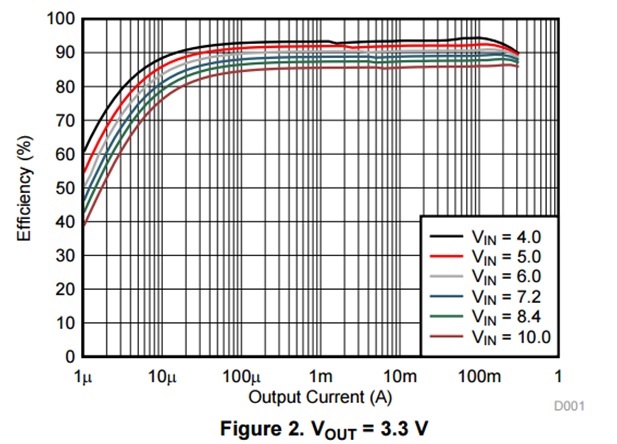Many smart meters are powered by two coin-cell batteries connected in series; after all, two batteries give twice as much battery life as a single battery. The second battery provides the energy required to meet the greater-than-10-year runtime between battery replacements that the industry requires.
Unfortunately, two batteries also give twice the voltage, which is harder to convert down even with the latest in ultra-low-power management devices. The higher voltage of two batteries in series is above the allowed range of many semiconductor devices, which are usually designed to accept just a single battery’s voltage. When considering ultra-low-power devices, which are absolutely required in this application with very low standby power consumption, there are very few available in the market which support two series batteries.
While the industry-leading TPS62740 and its 360nA quiescent current enable ultra-low-power systems that operate from single-cell batteries, its 5.5V input-voltage range prohibits operation from two or more cells connected in series. Extending this range to 10V, the new TPS62745 also adds a very useful feature in such systems: the ability to monitor the battery voltage with just the toggle of a digital input pin.
This input-voltage switch is an integrated transistor controlled by the host microcontroller (MCU). When the MCU wants to know the battery voltage, which it needs to check every so often to signal when its batteries need replacing, it activates the transistor. The transistor applies the TPS62745’s input voltage (the battery voltage) to a separate pin. This voltage then goes through a user-selectable voltage divider to the MCU’s analog-to-digital converter (ADC) input, where it reads the voltage. When that’s done, the MCU turns off the transistor. Since the TPS62745 takes care of driving the transistor, no external level-shifters are required. And because the transistor is off most of the time, there is no leakage of the input voltage through the voltage divider to discharge the battery. What a simple design!
Of course, the input-voltage switch feature is meaningless without an ultra-low-power supply efficiently converting the battery voltage to the MCU. As Figure 1 shows, the TPS62745 is quite good at this too, delivering around 85% efficiency from the 6V combined battery voltage at load currents of just 10µA. For comparison, a linear regulator is at most 55% efficient at this same condition of 6VIN and 3.3VOUT, and this number does not account for the ground current of the LDO, which can be several microamps.
Figure 1: The TPS62745 gives over 80% efficiency even at 10µA loads
What other ultra-low-power systems do you have that require more than 5.5VIN?
Additional resources
- Review the Smart Grid & Energy Solutions Guide.
- Do you have just a single coin cell in your smart meter? Check out this blog on Fully Charged.


